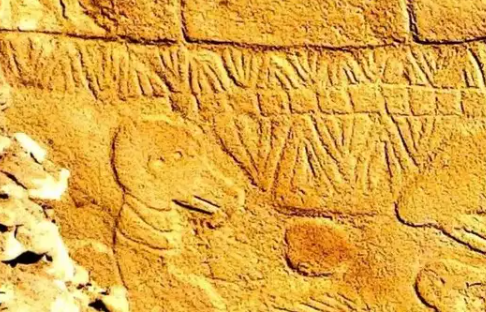World’s Oldest Calendar Discovered
Archaeologists at Göbekli Tepe in southern Turkey have discovered what is thought to be the Earth’s oldest known Sun-and-Moon calendar, carved into a large stone pillar. This discovery, reported in a study on July 24, offers new insights into the development of early timekeeping methods.
Key Discovery
The pillar, estimated to be nearly 13,000 years old, is adorned with 365 V-shaped symbols, each likely representing a single day. This design reflects an advanced understanding of both solar and lunar cycles. The calendar includes 12 lunar months plus an additional 11 days, indicating that ancient societies had a sophisticated grasp of time.
Historical Implications
In addition to the calendar, the pillar features carvings of a bird-like figure, which may symbolize the summer solstice constellation. These carvings are believed to date back to around 10,850 B.C., a period marked by a major comet strike that possibly impacted the climate and culture of the region. This comet event is thought to have triggered an ice age, leading to changes in societal structures and potentially fostering new religious and agricultural practices.
Impact on Human Development
Martin Sweatman, one of the study’s authors, suggests that the comet strike and its environmental effects might have spurred the development of early writing systems. The findings at Göbekli Tepe not only demonstrate early human observations of celestial events but also enhance our understanding of prehistoric societies. This discovery sheds light on early astronomical practices and cultural dynamics in Turkey, revealing the complex knowledge systems of ancient peoples and paving the way for future advancements in human knowledge.
Facts About Göbekli Tepe
- Göbekli Tepe, in Turkey, is the oldest known temple complex, built around 9600 BCE.
- It has huge stone pillars set up in circles, which were likely used for ceremonies.
- Göbekli Tepe was built over 6,000 years before Stonehenge.
- It was likely constructed by people who didn’t farm, which is surprising because it was thought that farming came before building complex structures.
- What exactly Göbekli Tepe was used for is still debated, with ideas like ancestor worship being possible reasons.
- The site has detailed carvings of animals, showing early forms of symbolic thinking.
- Excavations started in the 1990s, revealing the importance of the site.
Month: Current Affairs - August, 2024
Category: Science & Technology Current Affairs








